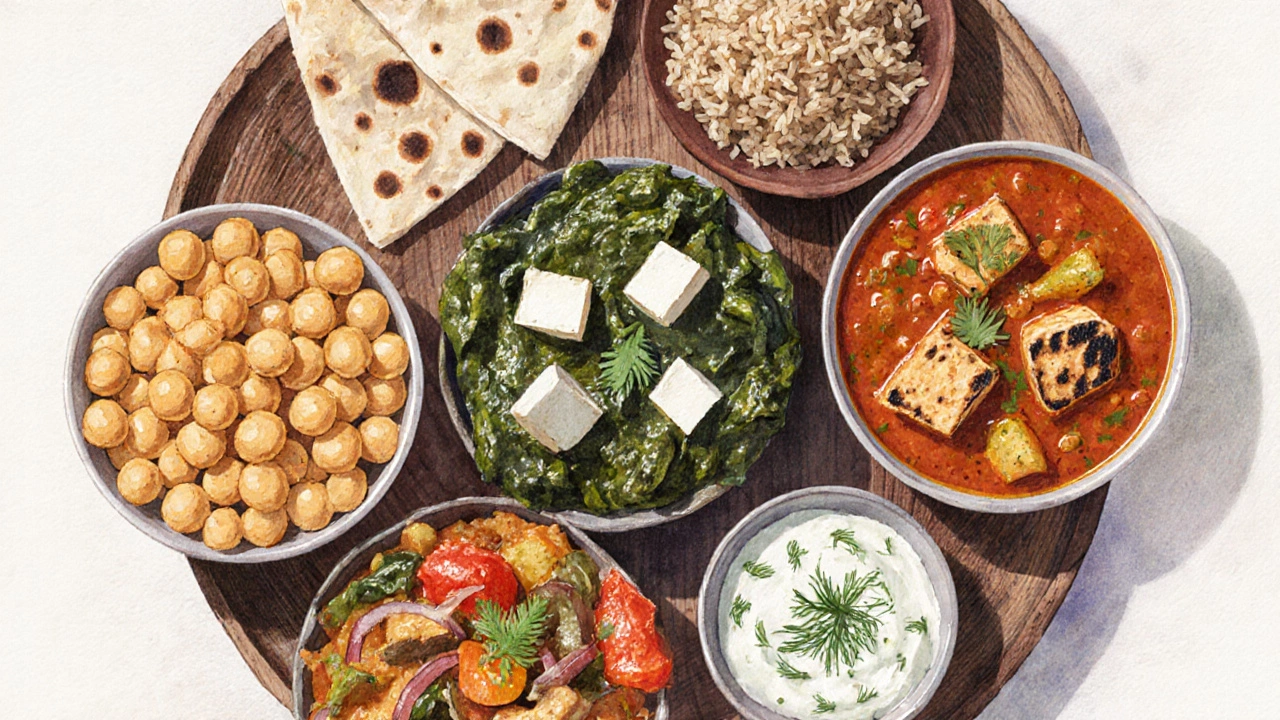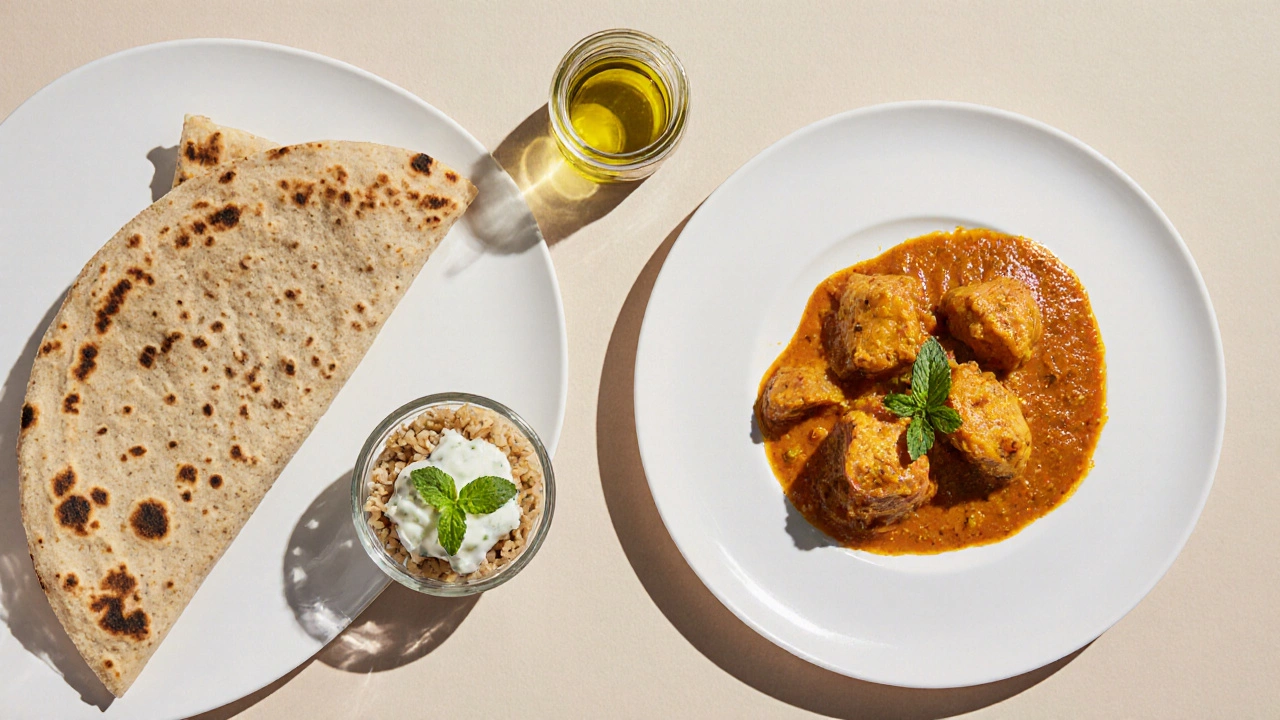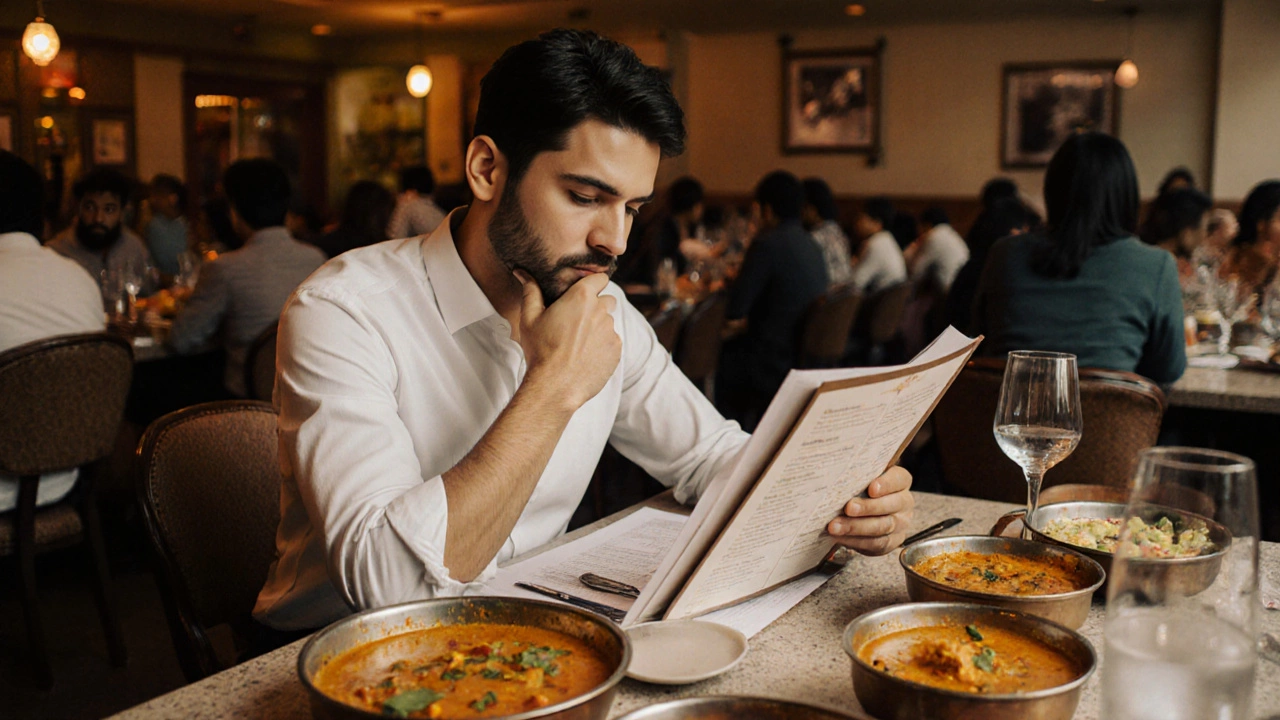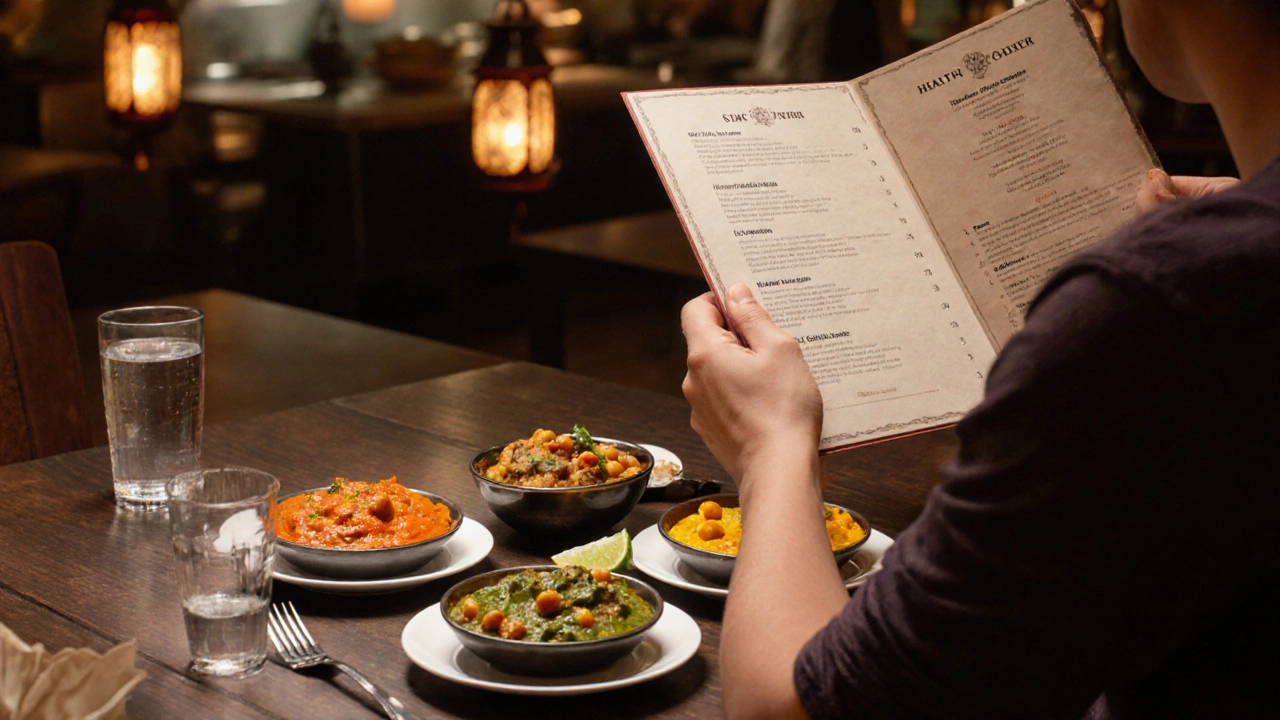Healthy Indian Curry Calculator
Healthy Curry Criteria
Enter your preferred nutritional targets to find the best curry options for you.
Recommended Curries
Enter your nutritional preferences and click "Find Healthy Curries" to see results.
When you crave Indian food, the first question is often healthiest Indian curry. Restaurants serve a rainbow of sauces, but not all of them are created equal. Some are packed with cream and butter, while others rely on fresh vegetables and legumes. This guide breaks down the nutrition basics, compares the most popular options, and gives you concrete tips so you can enjoy flavor without sabotaging your health goals.
How to Pick a Healthy Curry
Before we name the winners, let’s nail down what makes a curry “healthy.” Here are the key metrics you should look for on a menu or ask the staff about:
- Calorie count: Aim for 250-350kcal per serving if you’re watching weight.
- Fat content: Prefer dishes with less than 10g of total fat, especially saturated fat.
- Protein: Look for at least 10g of protein to keep you satiated.
- Fiber: A good curry offers 4g+ of fiber, helping digestion and blood‑sugar control.
- Sodium: Restaurant‑prepared curries often skim salt; choose options under 600mg per serving.
When you know what to check, you can scan any menu confidently.
Common Indian Curries and Their Typical Profiles
Indian cuisine features a wide spectrum of sauces. Below is a quick snapshot of the most common ones you’ll encounter when dining out:
- Tomato‑based sauces (e.g., Chicken Tikka Masala is a popular tomato‑cream blend that often includes butter and yogurt.)
- Creamy nut‑based sauces (e.g., Korma uses ground nuts, cream, or coconut milk, making it rich and high‑fat.)
- Leafy‑green sauces (e.g., Saag Paneer features spinach and paneer cheese, offering a balance of iron and protein.))
- Legume‑centric sauces (e.g., Chana Masala is a chickpea stew cooked with tomatoes, onions, and aromatic spices.))
- Simple dal preparations (e.g., Dal Tadka is split‑lentil cooked with minimal oil and tempered with mustard seeds and garlic.))
- Vegetable‑heavy curries (e.g., Mixed Vegetable Curry blends seasonal veggies in a light tomato‑onion gravy.))
Understanding these base styles helps you anticipate the calorie and fat load before you order.

Top Five Healthiest Curries to Order
Based on the criteria above, here are the five curries that consistently rank as the lightest, most nutrient‑dense choices when you order from a typical Indian restaurant.
1. Chana Masala is a chickpea‑based curry that delivers plant protein, fiber, and a modest calorie count.
- Calories: ~280kcal per cup
- Fat: 6g (mostly unsaturated)
- Protein: 12g
- Fiber: 9g
- Sodium: ~450mg (can request less salt)
Chickpeas are a heart‑healthy legume, and the sauce is usually tomato‑onion based, keeping added fats low.
2. Dal Tadka is a split‑lentil preparation spiced with cumin, mustard seeds, and a splash of ghee.
- Calories: ~250kcal per cup
- Fat: 5g (mostly from a teaspoon of ghee)
- Protein: 10g
- Fiber: 7g
- Sodium: ~400mg
Lentils are a powerhouse of protein and iron. Ask for “light tadka” to cut the oil further.
3. Saag Paneer combines nutrient‑dense spinach with paneer cheese, offering calcium and iron.
- Calories: ~320kcal per cup
- Fat: 9g (paneer adds some saturated fat)
- Protein: 13g
- Fiber: 5g
- Sodium: ~500mg
If you’re okay with a modest amount of dairy, this is a solid choice. Request low‑fat paneer or a smaller portion to keep calories in check.
4. Mixed Vegetable Curry is a medley of seasonal veggies simmered in a light tomato‑onion gravy.
- Calories: ~220kcal per cup
- Fat: 4g (often just enough oil to sauté the veggies)
- Protein: 5g
- Fiber: 6g
- Sodium: ~380mg
This option is the lowest‑calorie entry on the list and gives you a broad spectrum of vitamins.
5. Chicken Tikka Masala can be a healthier protein‑rich choice if you ask for a lighter version.
- Standard Calories: ~380kcal per cup (full‑cream version)
- Modified (light) Calories: ~260kcal per cup (less cream, more tomato)
- Fat: 8g (light version)
- Protein: 22g
- Fiber: 3g
- Sodium: ~550mg
Chicken supplies lean protein, and by swapping heavy cream for a tomato‑based sauce you shave off a hundred calories and a lot of saturated fat.
Nutrition Comparison Table
| Curry | Main Ingredient | Calories | Fat (g) | Protein (g) | Fiber (g) | Sodium (mg) |
|---|---|---|---|---|---|---|
| Chana Masala | Chickpeas | 280 | 6 | 12 | 9 | 450 |
| Dal Tadka | Lentils | 250 | 5 | 10 | 7 | 400 |
| Saag Paneer | Spinach & Paneer | 320 | 9 | 13 | 5 | 500 |
| Mixed Veg Curry | Assorted vegetables | 220 | 4 | 5 | 6 | 380 |
| Chicken Tikka Masala (light) | Chicken breast | 260 | 8 | 22 | 3 | 550 |

Smart Ordering Tips
- Ask for “light” or “less cream” when ordering tomato‑based sauces; most chefs will accommodate.
- Swap naan for a small whole‑grain roti to keep carbs in check.
- Request brown rice instead of white basmati for extra fiber.
- Ask the kitchen to hold the ghee or butter on the side so you can control the amount.
- Pair your curry with a side of fresh cucumber raita (yogurt‑based) for probiotic benefits and a cooling contrast.
These small adjustments can shave 100-200kcal off a typical meal without compromising flavor.

Key Takeaways
- Focus on legume‑based curries like Chana Masala and Dal Tadka for low calories, high protein, and fiber.
- Vegetable‑heavy sauces such as Mixed Vegetable Curry give the most vitamins with minimal fat.
- If you crave meat, opt for a light Chicken Tikka Masala by requesting less cream.
- Always ask for modifications-less oil, whole‑grain sides, and lower‑sodium preparations.
- Portion control matters; a typical restaurant serving is about one cup, so fit it into your daily macro goals.
Frequently Asked Questions
Which Indian curry has the most protein?
Among the healthier options, a light Chicken Tikka Masala provides about 22g of protein per cup, making it the top protein‑rich choice for a single‑serving curry.
Is it okay to eat naan with a healthy curry?
A small whole‑grain roti is a better match than buttery naan. If you love naan, limit yourself to half a piece and choose a whole‑wheat version if the restaurant offers it.
Can I get a vegan version of Saag Paneer?
Ask for extra tofu or chickpeas instead of paneer. Many Indian kitchens will happily replace the cheese, keeping the spinach base intact.
How much sodium is typical in restaurant curries?
Most restaurant curries fall between 400mg and 700mg of sodium per cup. Request a “low‑salt” preparation to bring it closer to 300mg.
Is brown rice a healthier side than white rice?
Brown rice adds about 2g of fiber per serving and has a lower glycemic impact, making it a smarter choice for blood‑sugar control.
Can I skip the curry sauce and just eat the veggies?
Absolutely. Ordering a dry “sabzi” (vegetable stir‑fry) drops the calorie count dramatically while preserving flavor.
What’s the difference between Dal Tadka and Dal Makhani nutritionally?
Dal Makhani uses cream and butter, pushing calories above 450kcal per cup, whereas Dal Tadka stays around 250kcal with a lighter oil finish.
Are restaurant‑style curries suitable for a low‑carb diet?
Choose protein‑centric sauces like light Chicken Tikka Masala and skip the rice. Pair with a side of cauliflower rice for a low‑carb meal.
